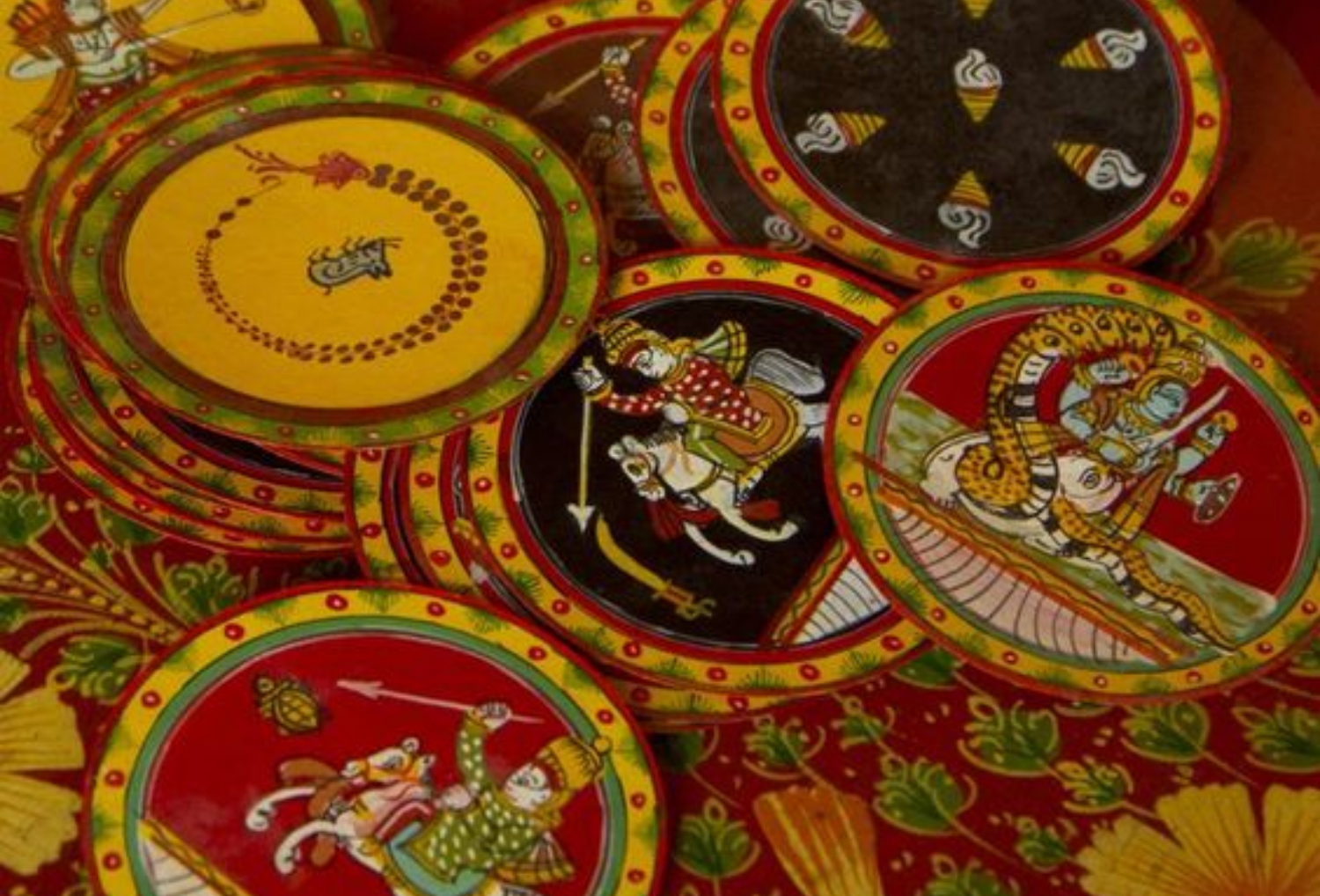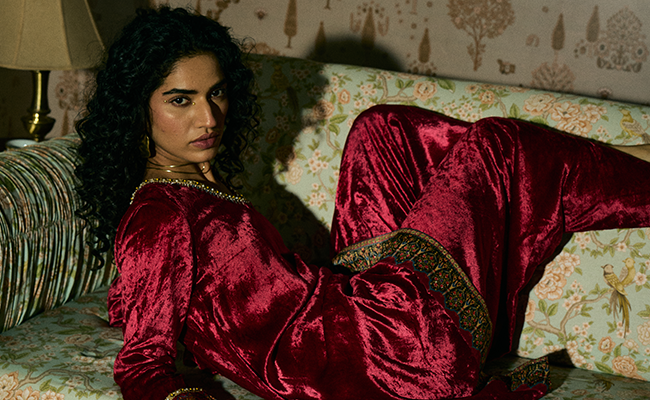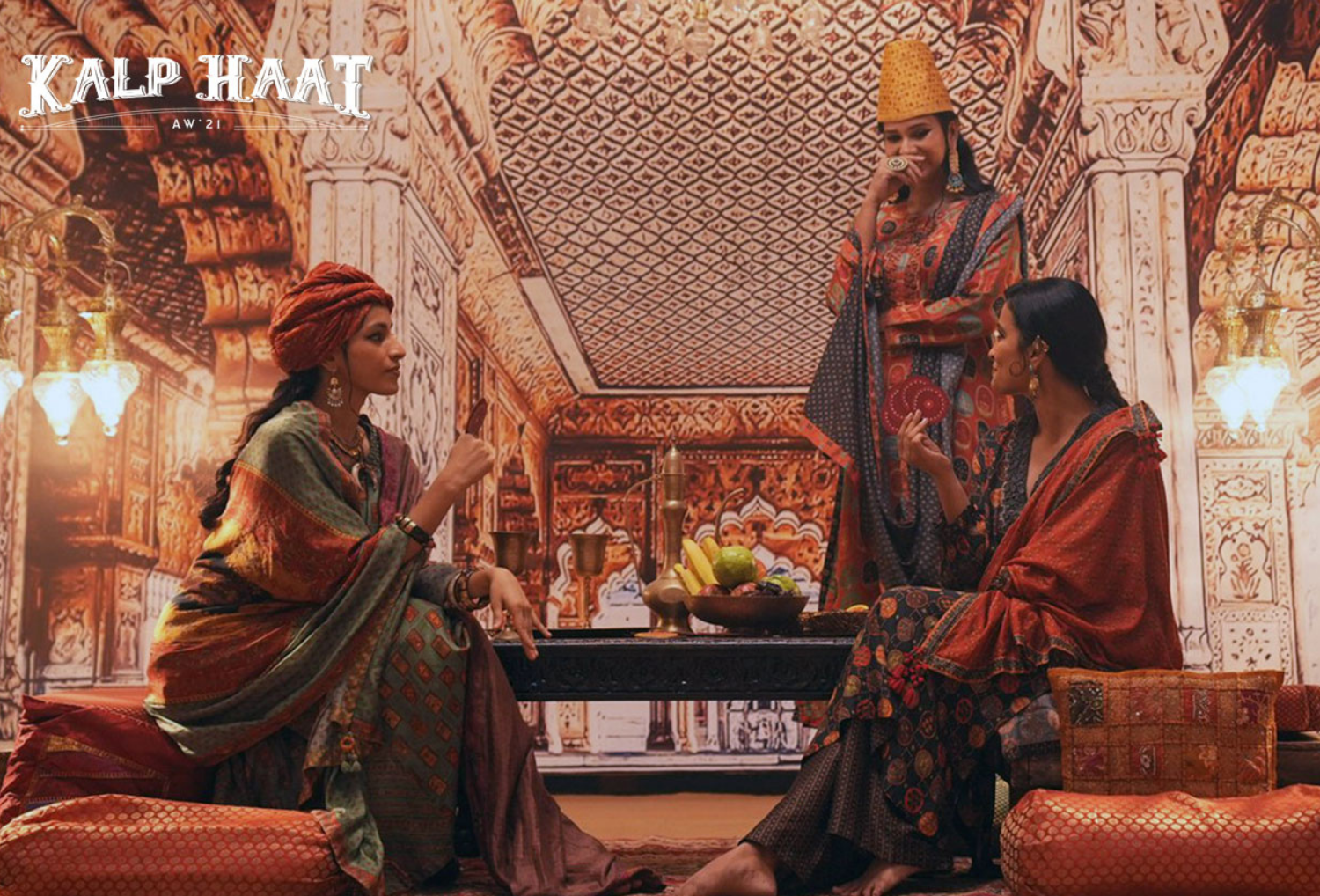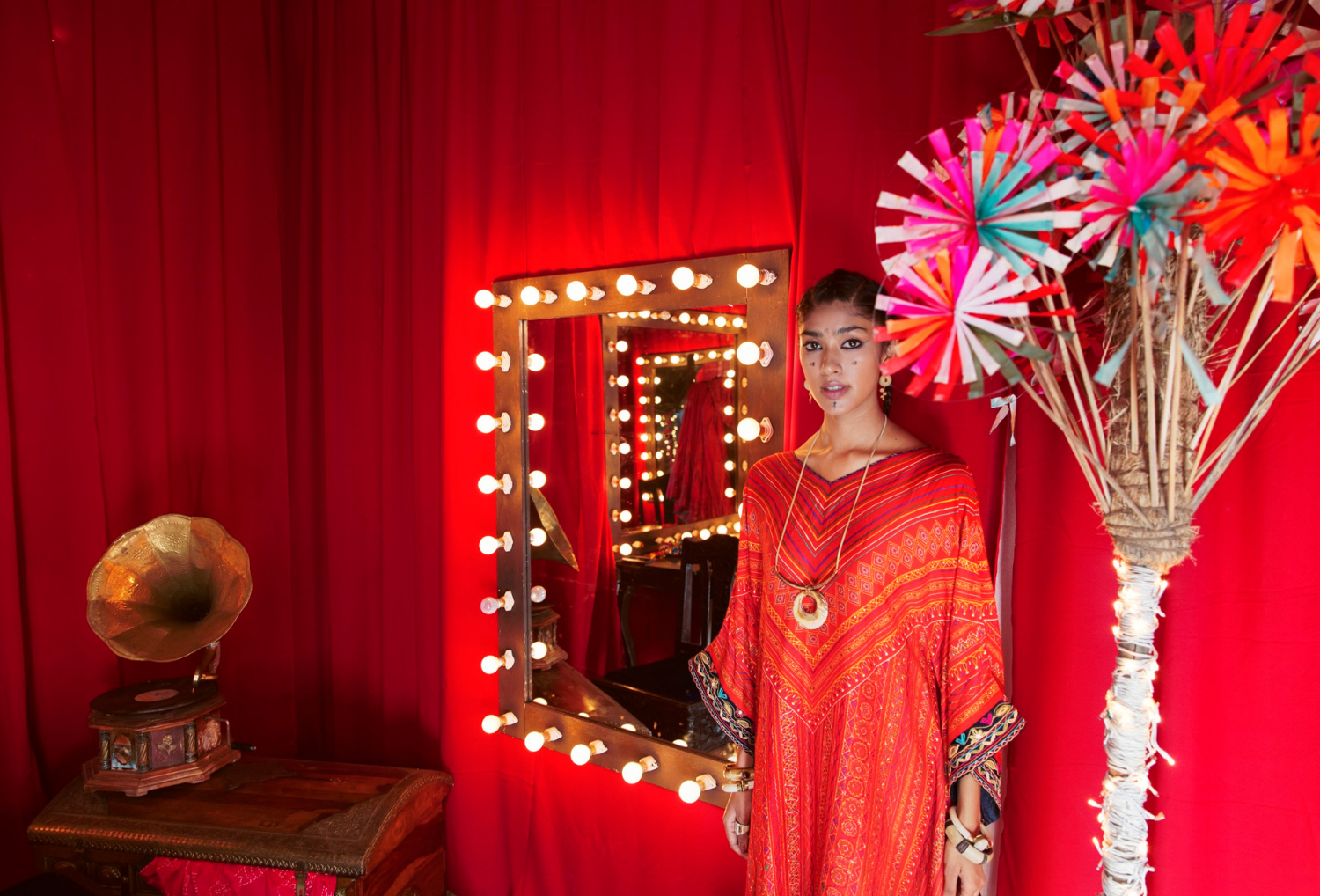
The Story of Ganjifa
Khusro baazi prem ki
Jo main kheli pee ke sang
Jeet gayi to piya more
Haari, main pee ke sang
Ganjifa, an ancient Indian card game, was historically believed to have been brought to India and popularised during the Moghul period. Ganjifa originated in Persia in around the 15th Century, it comes from the Persian word ‘Ganjifeh’ means playing cards. In India they arrived through Sufi Saints during Mughal period, and gradually became popular amongst the kings and and kingdoms.

The cards were typically circular, although some rectangular decks have also been part of the artists’ imaginations. The Mughal GAnjifa cards had paintings of wrestlers, acrobats, swordsmen, soldiers, hunters, musicians, animals and birds. As it spread toother regions, the colour and iconography changed, and largely stuck to devotional themes. Needle-fine lines that depicted the subject was one more aspect of the intensity of deftness embedded in the art form.

The cards were traditionally made in two ways. A version for the rich, which was made on stone-inlaid ivory etched in enamelled silver, gold or tortoise shell with sandalwood pieces was called Darbar kalam. The other, known as the Bazar kalam, was made for the general public. It used materials such as wood, palm leaf, stiffened cloth, or pasteboard and was much cheaper. The cards were painted by hand using natural colours. This game delighted both the rich and poor.
The Making of Ganjifa


The cards take as long as 30 days to make. They are crafted upon a canvas that is made from old saris, painted using colours pounded out of stones and leaves and then finished with layers of natural gum. Traditionally, Ganjifa Cards were painted with mouse-hair brushes and natural colours like White (from powdered conch shells); Green (from various leaves); Black (from lamp soot); Red (from a stone called Hingulal); Blue (from a stone called Khandneela) and Yellow (from a stone called Hartal).
Image Courtesy : Pinterest/Wikipedia




5 comments
LTbWisNGYQ
BIxZbskPQ
yiuAEceQb
FMzbEPnJwotYXfpx
lQixfjJtFeX
hWjlCtvZkX
Good explanation
Vidushi Chaudhary
Good explanation
Vidushi Chaudhary
Leave a comment
This site is protected by hCaptcha and the hCaptcha Privacy Policy and Terms of Service apply.